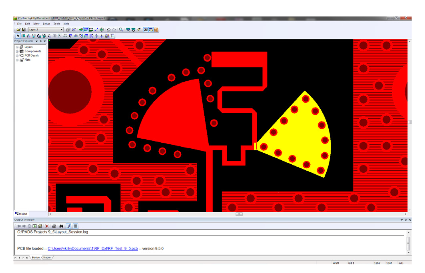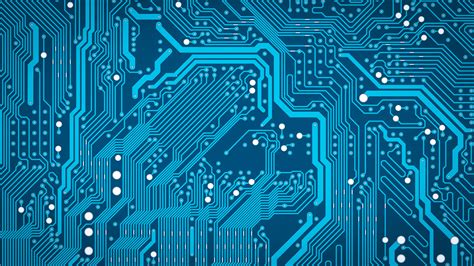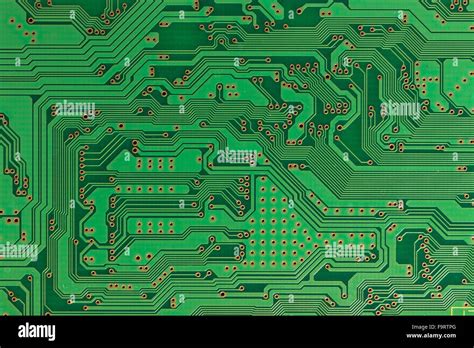Innovative Approaches to Optimize Prototype Assembly Services
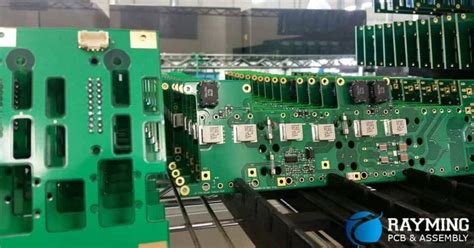
Key Takeaways
In the realm of product development, understanding the significance of prototype assembly services is paramount. These services serve as the bridge between concept and reality, allowing designers and engineers to transform digital designs into tangible prototypes. Utilizing advanced technologies such as pcb assembly techniques, companies can enhance their prototype development processes significantly. The integration of automated systems in pcba (printed circuit board assembly) not only accelerates production timelines but also ensures a high degree of precision and consistency throughout the assembly line. Moreover, adopting lean manufacturing techniques can streamline workflows by minimizing waste and optimizing resource use, ultimately leading to more cost-effective prototype production.
Ensuring quality remains a top priority; implementing best practices within assembly processes ensures that prototypes meet stringent standards before they move into full-scale manufacturing. As industries evolve, exploring innovative materials for prototype constructions can further push the boundaries of what’s possible in design and functionality. Metrics for measuring success in these processes offer valuable insights into areas requiring improvement, enhancing overall efficiency. By marrying these strategies with a solid grasp of current technologies, businesses can unlock new opportunities for growth in an increasingly competitive market.
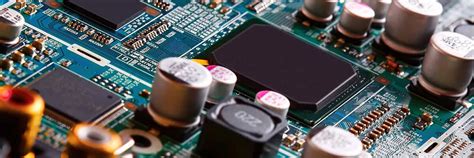
Understanding the Importance of Prototype Assembly Services in Product Development
In today’s competitive landscape, prototype assembly services play a crucial role in the product development cycle. These services are essential for transforming innovative ideas into tangible products efficiently and effectively. By focusing on efficiency, cost-effectiveness, and quality, companies can accelerate their time-to-market, gaining a significant advantage over competitors.
The process of creating prototypes often involves sophisticated techniques and technologies, especially in the realm of pcb assembly (printed circuit board assembly). Utilizing advanced methodologies can streamline these processes, ensuring that prototypes not only meet design specifications but also function optimally during testing stages. Implementing lean practices further enhances production efficiency by minimizing waste and maximizing resource utilization.
To illustrate this point, consider the table below outlining the key benefits of effective prototype assembly services:
| Benefit | Description |
|---|---|
| Speed to Market | Accelerated development timelines lead to earlier product launches. |
| Cost Reduction | Efficient prototypes help reduce development costs through smarter resource allocation. |
| Higher Quality | Focus on precision and quality control minimizes errors in prototypes. |
| Enhanced Collaboration | Improved communication between teams streamlines development processes. |
Furthermore, as technologies advance, methodologies around pcba become increasingly vital. Companies are leveraging automation to enhance these assembly services, which not only improves accuracy but also allows for more complex designs to be integrated seamlessly into prototype development. Ultimately, understanding the importance of these services serves as a foundation for successful product innovation and market viability.
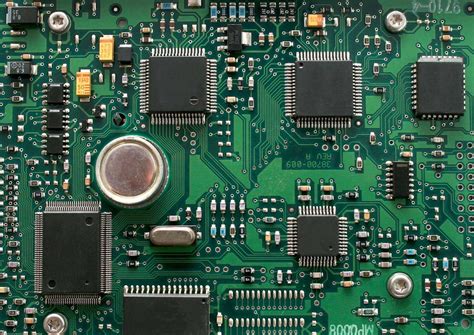
Key Technologies Transforming Prototype Assembly Efficiency
In the rapidly evolving landscape of product development, prototype assembly services play a crucial role in ensuring that products can be brought to market swiftly and effectively. A major driver of efficiency in this domain is the integration of advanced technologies such as automation, 3D printing, and sophisticated software for managing pcb assembly and pcba processes. These innovations significantly enhance operational workflows, allowing for faster turnaround times and reduced human error. For instance, employing robotic automation can dramatically streamline repetitive tasks involved in assembly, thereby minimizing labor costs while increasing precision and consistency in the final product. Additionally, utilizing software tools for real-time tracking and quality assurance ensures that each phase of the assembly process meets stringent standards. Coupled with these technological advancements, methodologies such as Agile development provide flexibility and responsiveness to market changes, ultimately leading to improved outcomes in prototype assembly services. By staying abreast of these cutting-edge technologies, businesses can greatly enhance their prototype assembly efficiency while ensuring high-quality deliverables that meet customer expectations.

Streamlining Processes: Lean Manufacturing Techniques in Assembly
In the realm of prototype assembly services, adopting lean manufacturing techniques can significantly enhance efficiency while reducing costs. Lean manufacturing focuses on minimizing waste without sacrificing productivity, which is particularly crucial in the pcb assembly process. By implementing methodologies such as value stream mapping and continuous improvement, teams can identify bottlenecks typically associated with pcba and optimize workflows. For instance, organizing the assembly line to promote smoother transitions between stages can lead to quicker turnaround times for prototypes. Additionally, employing cross-functional teams ensures that all perspectives are considered, promoting a culture of collaboration that enhances problem-solving capabilities. These streamlined processes not only improve the speed of assembly but also foster a quality-first mindset, ensuring that the final product meets rigorous standards before advancing to full-scale production. This systematic approach ultimately results in prototypes that reflect not only innovative designs but also a commitment to reducing time and resource waste throughout development stages.

Cost-Effectiveness Strategies for Prototype Development
In the realm of prototype development, cost-effectiveness stands as a pivotal element that can significantly influence the success of a project. To achieve this, companies are increasingly adopting innovative strategies that reduce expenses while maintaining high standards of quality. One effective approach involves utilizing advanced technologies such as pcb assembly and pcba, which offer precision and reduced labor costs. By embracing automation and streamlining workflows, organizations can minimize waste and enhance productivity during the assembly process. Furthermore, focusing on supply chain optimization allows for better pricing on materials without compromising on quality, enabling firms to strike a balance between cost and performance. Implementing lean manufacturing principles facilitates continuous improvement in both efficiency and effectiveness, which is crucial in prototype development. By aligning these strategies with strong project management practices, businesses can ensure that they meet their goals sustainably while keeping costs under control.
Ensuring Quality in Prototype Assemblies: Best Practices
Ensuring quality in prototype assemblies is crucial for successful product development, particularly in the context of pcb assembly and pcba processes. Adopting a systematic approach that incorporates best practices can significantly elevate the standards of quality assurance. One effective strategy is to implement a rigorous testing protocol throughout the assembly process. This involves establishing clear specifications and conducting inspections at various stages to identify any discrepancies early on. Additionally, utilizing advanced technologies such as automated optical inspection (AOI) can enhance detection of defects, minimizing the risk of errors that lead to costly rework or product failure.
Moreover, integrating a robust quality management system (QMS) ensures consistency and compliance with industry standards, which is vital for maintaining both reliability and trust with clients. Training staff on best practices and the importance of quality control extends this commitment throughout the workforce, fostering an environment where quality is prioritized at every level. Ultimately, by embracing these best practices in prototype assembly services, teams can not only improve efficiency but also drive down costs associated with poor-quality products while enhancing overall customer satisfaction with high-quality pcba outputs.
The Role of Automation in Enhancing Assembly Services
In today’s fast-paced product development landscape, automation plays a crucial role in elevating the efficiency of prototype assembly services. By integrating advanced technologies such as robotics and artificial intelligence, companies can significantly streamline the pcb assembly process, leading to faster turnaround times and improved precision. Automated systems are capable of performing repetitive tasks with high accuracy, thereby minimizing human error and enhancing overall quality in the pcba phase. For instance, using automated soldering machines and assembly line robotics not only accelerates production but also ensures that components are accurately placed and securely connected.
Moreover, automation contributes to cost-effectiveness by reducing labor costs and enabling better allocation of human resources to more complex tasks that require cognitive skills. Investment in these technologies might seem daunting initially; however, the long-term benefits, such as decreased labor costs and increased production speed, often outweigh the upfront expenses. It is essential for companies to continuously assess their processes and integrate adaptive automation solutions tailored to their specific needs.
"Investing in automation is not just a trend; it’s a strategic move towards sustained competitiveness in prototype assembly."
Furthermore, adopting automation allows for real-time data collection and analytics. This capability enhances decision-making processes by providing immediate insights into performance metrics and potential bottlenecks within the assembly line. Consequently, it becomes easier for organizations to measure their success against established benchmarks while iteratively improving their methods. Such advancements in technology are pivotal for businesses aiming to remain agile and responsive to market demands while maintaining a strong focus on enhancing prototype assembly services.
Innovative Materials for Successful Prototype Assembly
In the rapidly evolving landscape of product development, the choice of materials plays a crucial role in prototype assembly services. The integration of innovative materials can significantly enhance the efficiency and effectiveness of processes related to pcb assembly and pcba. Advanced materials such as lightweight composites, thermoplastics, and flexible circuits not only contribute to reducing weight and improving performance but also facilitate faster assembly times. For instance, using flexible circuit boards allows for more compact designs which can streamline the assembly process while maintaining reliability and functionality. Furthermore, the adoption of additive manufacturing techniques enables manufacturers to create complex geometries that were previously unattainable with traditional methods. This adaptability in material selection ensures that products can meet specific requirements without incurring excessive costs. Additionally, sustainable materials are gaining traction, aligning with a growing focus on environmental responsibility in prototype development. By leveraging these innovative materials, companies can optimize their prototype assembly services, achieving better quality outcomes while also addressing market demands for efficient and eco-friendly solutions. Ultimately, this strategic approach to material selection is integral to staying competitive in today’s fast-paced manufacturing environment.
Measuring Success: Metrics for Optimizing Assembly Processes
Measuring success in prototype assembly services involves identifying key metrics that reflect the efficiency and effectiveness of the assembly processes. One of the primary indicators is the assembly time, which quantifies how long it takes to complete a project from start to finish. Reducing assembly time can lead to improved turnaround rates, allowing manufacturers to respond swiftly to market demands. Additionally, monitoring the defect rate offers insights into the quality of assembled products. A lower defect rate signifies a higher quality pcb assembly process, indicating that the produced pcba components meet required specifications. Furthermore, utilizing cycle time analysis enables teams to understand how long each stage of assembly takes, helping identify bottlenecks in the workflow. Implementing these metrics fosters a data-driven environment where improvements can be continuously integrated, thereby enhancing overall performance in prototype development. Emphasizing these success metrics not only aids in evaluating current practices but also informs strategic decisions for future projects, ultimately leading to cost-effective and high-quality outcomes in prototype assemblies.
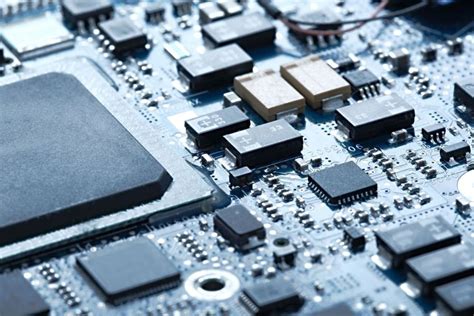
Conclusion
In summary, optimizing prototype assembly services is crucial for the success of product development. Utilizing cutting-edge technologies such as automation, pcb assembly, and advanced materials can significantly enhance efficiency and reduce costs. Effective implementation of methodologies like lean manufacturing fosters a streamlined approach, ensuring that every step of the assembly process contributes to improved productivity and quality. Adopting best practices in ensuring quality allows businesses to minimize defects in assemblies, particularly in complex tasks like pcba operations. By measuring success through specific metrics, organizations can continuously refine their processes, ultimately leading to more successful and innovative products entering the market. Emphasizing these innovative approaches will not only support effective prototype development but also instill a culture of continual improvement within teams dedicated to the assembly services sector.
FAQs
What are prototype assembly services?
Prototype assembly services refer to specialized activities that focus on assembling a product prototype, enabling designers and engineers to test and refine their concepts before mass production.
Why are prototype assembly services important?
These services play a critical role in product development by helping teams identify design flaws early, thus ensuring that the final product is more reliable and effective.
How does pcb assembly factor into prototype development?
PCB assembly, or PCBA, is essential for prototypes involving electronics, as it ensures that all electronic components are correctly placed and connected on the printed circuit board, facilitating functionality testing.
What technologies can enhance efficiency in prototype assembly?
Emerging technologies such as automation, 3D printing, and advanced software for design simulation can greatly enhance efficiency in the prototype assembly process.
What are some best practices for ensuring quality in prototypes?
Implementing rigorous testing protocols, utilizing quality management systems, and adhering to industry standards are critical practices for maintaining high quality throughout the prototype assembly stage.
How can cost-effectiveness be achieved in prototype development?
Cost-effectiveness can be achieved by optimizing material usage, utilizing efficient tooling processes, and employing strategies like lean manufacturing principles throughout the PCBA process.



